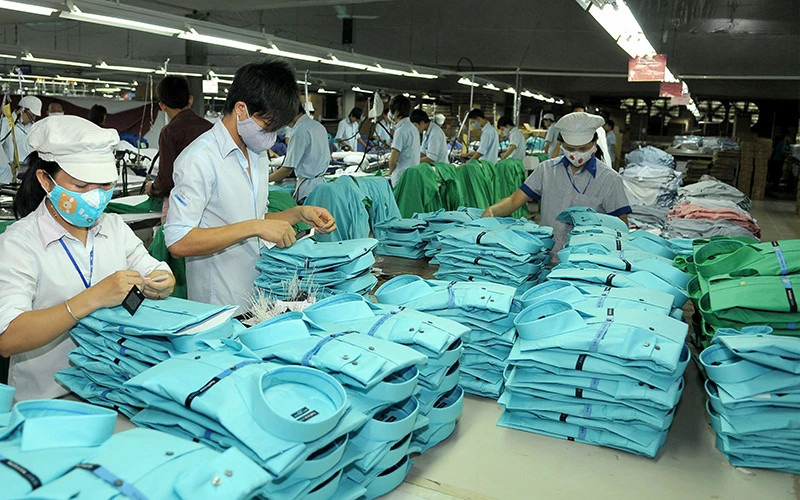To meet these goals, textile enterprises must address challenges such as small order sizes, rapid delivery times, and competitive pricing. Companies are focusing on improving labour skills, enhancing productivity, implementing policies to attract and retain workers, and ensuring sufficient resources for production and growth.
Sustaining growth
Than Duc Viet, CEO of May 10 Corporation, shared that flexible strategies helped the company maintain stable growth and secure jobs for employees. May 10’s total revenue for 2024 reached nearly 4.7 trillion VND (194.7 million USD), a 10% increase, while profits grew by 7% to 131.5 billion VND. The average monthly income of workers exceeded 10 million VND. For 2025, the company aims for revenue of 5.05 trillion VND and worker incomes of 10.5 million VND per month.
To achieve these targets, May 10 plans to expand markets, increase exports, and adopt digital and green transformations. The company utilises advanced software and automation equipment to boost efficiency. Its green initiatives focus on sustainable facilities, renewable energy, and eco-friendly materials. These measures aim to reduce annual carbon emissions by 15,000–20,000 tonnes by 2025.
Similarly, Phong Phu Corporation achieved a 20.7% revenue growth in 2024, reaching 2.55 trillion VND, with profits up 10.1% to 352 billion VND. The company plans to invest in automation, develop new products, and cut costs to meet its 2025 goals of 2.6 trillion VND in revenue and 355 billion VND in profit.
Hoa Tho Textile and Garment Corporation reported a 10% increase in revenue, reaching 4.95 trillion VND in 2024, while profits grew by 53% to 336 billion VND. Vice CEO Hoang Thuy Oanh said the company would continue investing in modern equipment, workforce training, and market development to maintain its growth trajectory.
Despite positive signals, the textile industry faces hurdles such as lower pricing, tighter deadlines, and complex customer demands. Cao Huu Hieu, CEO of Vietnam National Textile and Garment Group (Vinatex), noted that while the garment sector saw steady growth in 2024, the yarn sector struggled with profitability. The group’s consolidated revenue reached 18.1 trillion VND, with pre-tax profit growing 37.5% to 740 billion VND.
Proactively adopting synchronous solutions
To capitalise on opportunities, the yarn sector must expand market reach and deepen participation in global supply chains, particularly in key markets like China, India, and Bangladesh. The garment sector needs to remain agile, aligning production with market demand while integrating with the textile-dyeing ecosystem for sustainable growth.
Labour shortages pose another significant challenge. Although productivity and worker incomes rose in 2024, the workforce shrank by 8%, raising concerns about long-term sustainability. Nguyen Xuan Duong, Chairman of Hung Yen Garment Corporation, emphasised the need for stable housing and working conditions to attract labour from other regions.
The industry is benefitting from 17 of 19 new-generation free trade agreements already in effect, which facilitate market diversification, expanded partnerships, and high-value-added products. According to Vu Duc Giang, Chairman of the Vietnam Textile and Apparel Association (VITAS), the sector is quickly adapting to automation, digital management, and the green standards required by export markets.
Given the ongoing shift of global orders to Vietnam and increasing demand, the textile and garment industry is well-positioned to achieve its 47–48 billion USD export target. By leveraging its competitive advantages and addressing challenges in workforce development and sustainability, the industry aims to achieve robust growth in the years ahead.
















